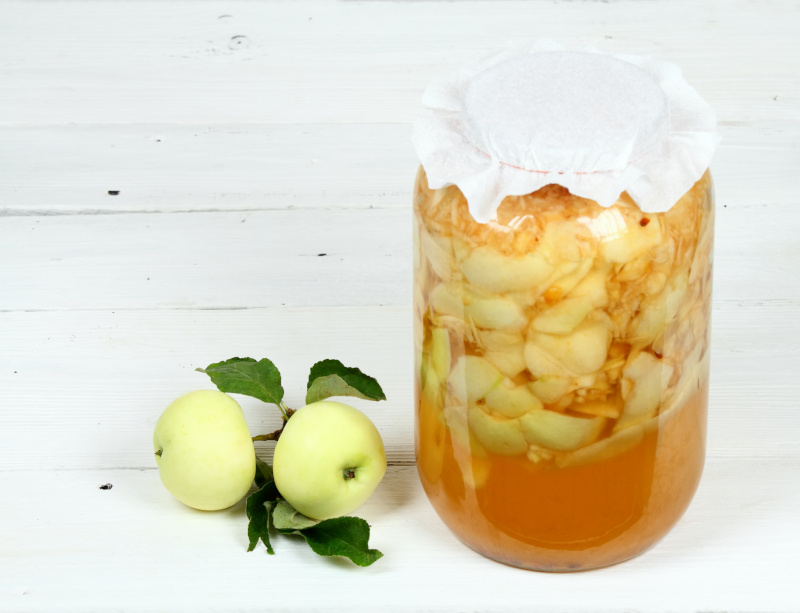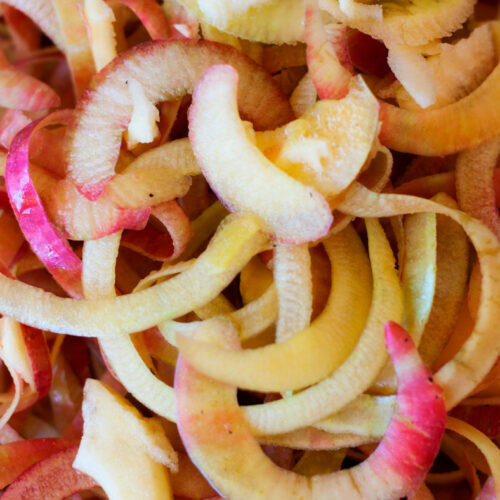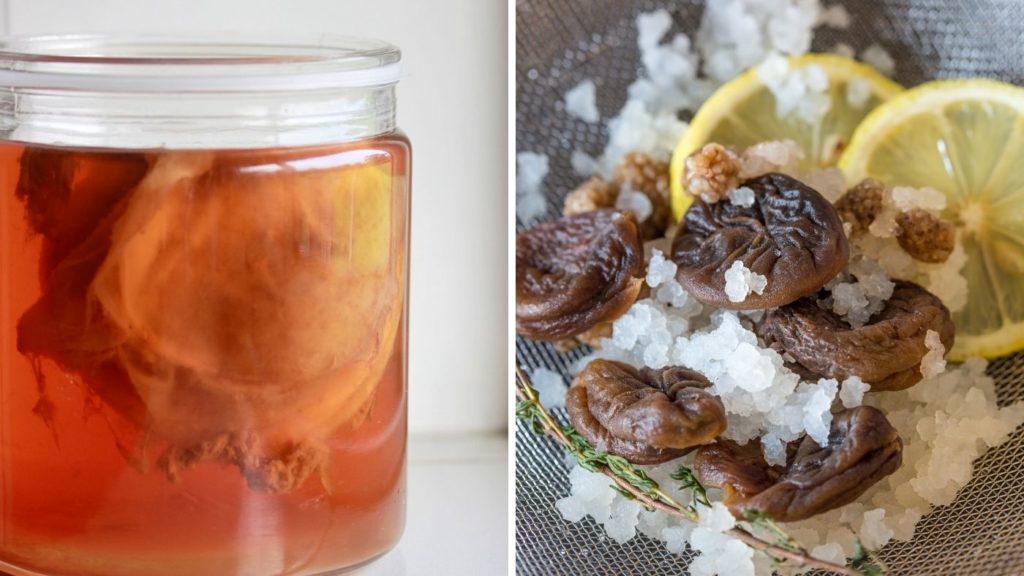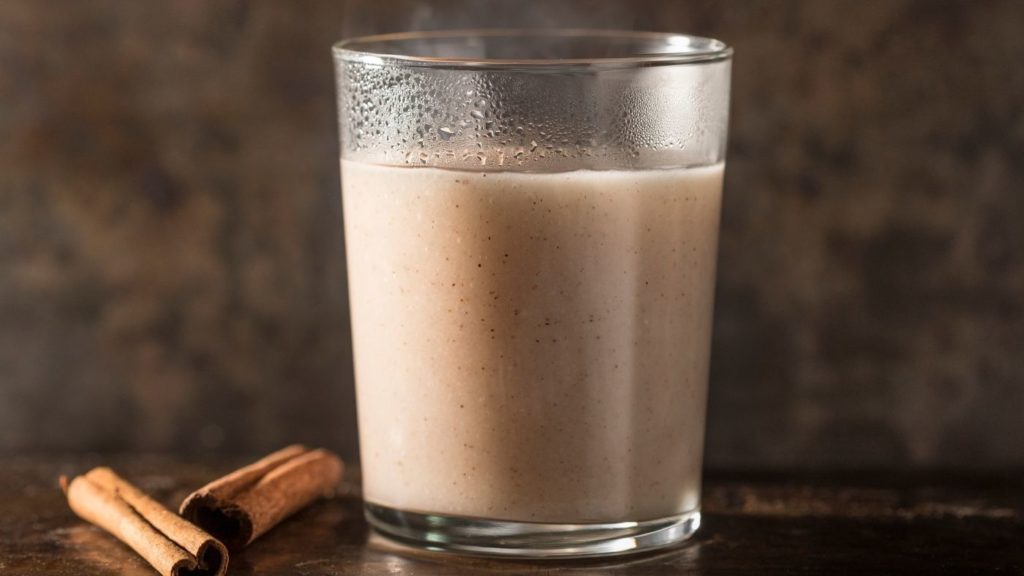Learn how to turn apple peels into delicious, probiotic-rich, waste-free vinegar!
Making vinegar at home is easier than you think. All you need are a few ingredients you probably have in your kitchen and a little patience.
Next time you make an apple pie, consider making this apple peel vinegar recipe… It’s a great way to recycle peels and give them a useful second life in the kitchen.
This article will give you all the information you need to easily make your own vinegar from apple peels!
Go straight to the section that interests you:
How Do You Make Vinegar From Apple Peels?
Vinegar is produced by fermentation through the action of microorganisms.
With vinegar, two types of microorganisms are used: yeast (such as the type of yeast used to make bread, beer, and wine) and acetic acid bacteria (responsible for creating acetic acid; in other words, vinegar).
Process Steps
- Yeast turns sugar into alcohol.
- Bacteria convert alcohol into acetic acid (vinegar)
These two types of microorganisms are what turn a sweet liquid into vinegar!


In our apple peel vinegar recipe, these two steps are not separated.
Want to know more about vinegar making process? Check out our complete guide on How to Make Vinegar.
Ingredients for Making Apple Peel Vinegar
Here are the 5 ingredients needed to make apple peel vinegar.
Apple peels
Any part of the apple can be used to make vinegar.
Wash the apples well before peeling them. You can leave the seeds and stems, which may contain yeast. Our recipe uses the peels and cores of approximately a dozen apples.
If possible, use organic apples.
Looking for an apple juice vinegar recipe? Check out our Cider Vinegar Recipe.
Water
Use filtered or chlorine-free water at room temperature.
For more information, see Which Is the Best Water for Fermenting?
Sugar
Sugar feeds yeast and speeds up fermentation. Since the peels do not contain enough sugar for the needs of the yeasts, we add some to our recipe.
You can use white sugar, honey, maple syrup, or brown sugar.
Do not use substitutes, such as erythritol or monk fruit! These substitute sugars are not suitable for yeast.
Yeast
Yeast is everywhere! It is found in the peels and stems of apples.
It is optional, but to speed up the process, you can also add a pinch of bread yeast or champagne yeast at the beginning of the fermentation.
Mother of Vinegar
The mother of vinegar is a liquid that contains enough acetic acid bacteria to drive the fermentation process.
If you have already made vinegar, you can use some of your homemade vinegar.
If not, buy unpasteurized vinegar. It’s readily available in grocery stores or health food shops.
For more information, see What Is a Mother of Vinegar?
What Equipment Do I Need to Make Apple Vinegar?
You can easily find all the equipment to make vinegar in your kitchen!
Choose glass or stainless steel equipment. If you use plastic, it must be food-grade. The acidity of the vinegar could damage low quality plastic.
The jar should have a large opening to facilitate the flow of vinegar and air.
To cover the jar, get a tightly woven cotton cloth, which will let the air in, but not the bugs! Fruit flies love vinegar and you really don’t want them in your jar…
Bottles for storing vinegar should be airtight. You can use recycled bottles, as long as they have been thoroughly washed.

Steps to make vinegar with apple peels
1. Add the ingredients
In a jar, add the water, peels, sugar, a little unpasteurized vinegar, and a little dry yeast. Cover with a breathable cloth.
2. Mix regularly
Stir every day to prevent the peels from floating and getting mouldy.
During the first two weeks, yeast multiplies rapidly and turns sugar into alcohol.
3. Removing the skins
After ten days or so, yeast consumed much of the sugar in the peels. Remove the peels and let the fermentation take place again at room temperature.
The acetic acid bacteria take over and turn the alcohol into vinegar.
4. Bottle
After several weeks, when the vinegar is acidic enough, put it in airtight bottles.
The vinegar is ready to be used in all your recipes!

Apple Peel Vinegar Recipe
Equipment
- 1 long mixing spoon
Ingredients
- 500 g pesticide-free apple peels and cores
- 2 L filtered water
- 150 g white sugar
- 1 pinch champagne yeast (optional)
- 400 ml unpasteurized vinegar
Steps
Vinegar preparation
- Wash thoroughly all the equipment.
- Place the peels and apple cores in the fermentation jar.
- Add the sugar, water, and mother of vinegar to the jar.
- If desired, fill a small bowl with warm water. Add the yeast and let it stand for 10 minutes at room temperature. Add to the jar.
- Mix well with the wooden spoon until the sugar is dissolved.
- Cover with a breathable cloth and secure with a rubber band.
First Fermentation (With Peels)
- Let the jar ferment out of direct sunlight at room temperature.
- Every day for a fortnight, stir the mixture with a wooden spoon. Bubbles will appear in the mixture.
- After 14 days, strain the mixture through a fine sieve to remove the peels. Squeeze the peels well to remove as much liquid as possible. Throw the apple peels into the compost.
- Return the liquid to the jar and cover it with the cloth.
Second Fermentation (Without Peels)
- Let it ferment at room temperature for at least one month.
- Taste. When the vinegar is acidic enough, bottle in airtight containers. If desired, save about 2 cups of vinegar for your next recipe.
Notes
Frequently Asked Questions
When Is My Vinegar Ready?
Fermentation time can vary depending on temperature, microorganisms present, and ingredients.
Vinegar can take up to 4 months to ferment! Taste from time to time to see if the vinegar is acidic enough for your taste. If necessary, put the fermentation jar in a slightly warmer place (for example, near a radiator or on the fridge).
What Is the Film That Forms on the Surface of My Vinegar?
This film is a sign that the fermentation is going well!
The film is created by bacteria. It is part of what is called the “mother of vinegar”. It can be added (with a little liquid) to a new vinegar recipe.
Do I Have to Use Organic Apples?
It is not mandatory, but it is better. Since apples are left to macerate for several days in a liquid, it is preferable to use pesticide-free apples.
Can I Use Frozen or Cooked Apple Peels?
If you don’t have enough peels to make a recipe, you can store them in the freezer in an airtight container or freezer bag.
Collect them until you have enough!
However, freezing (or cooking) can weaken the yeast in the peels. We recommend using dry yeast in this case, to drive the fermentation process.
Can I Use Other Fruit Than Apples to Make Vinegar?
Of course! Use pear peels, peach peels, plum peels, or even cherry pits.
Feel free to mix peels to create unusual flavours.
Can I Make a Smaller Vinegar Recipe?
Yes, the peel vinegar recipe can easily be adapted to the quantity of peels you have.
Here are the proportions for 1L of vinegar:
- 1 litre of water
- 250 g fruit peels
- 75 g sugar
- 200 ml unpasteurized vinegar
- Adapt to your needs!
How to Use Apple Vinegar?
Apple vinegar is used to add acidity to recipes. Add it…
- To vinaigrettes
- To marinades
- To sauteed vegetables
- To cooking meats (deglazing)
- To syrups (shrub)
- Caution! We do not recommend using vinegar for your homemade canning. Preserves require a high degree of acidity, which is difficult to obtain with this technique.

